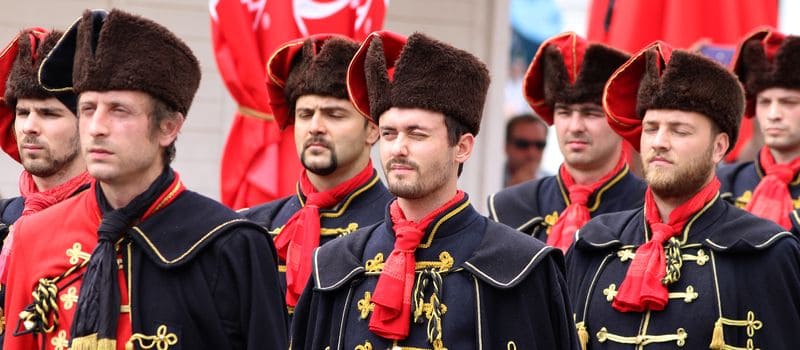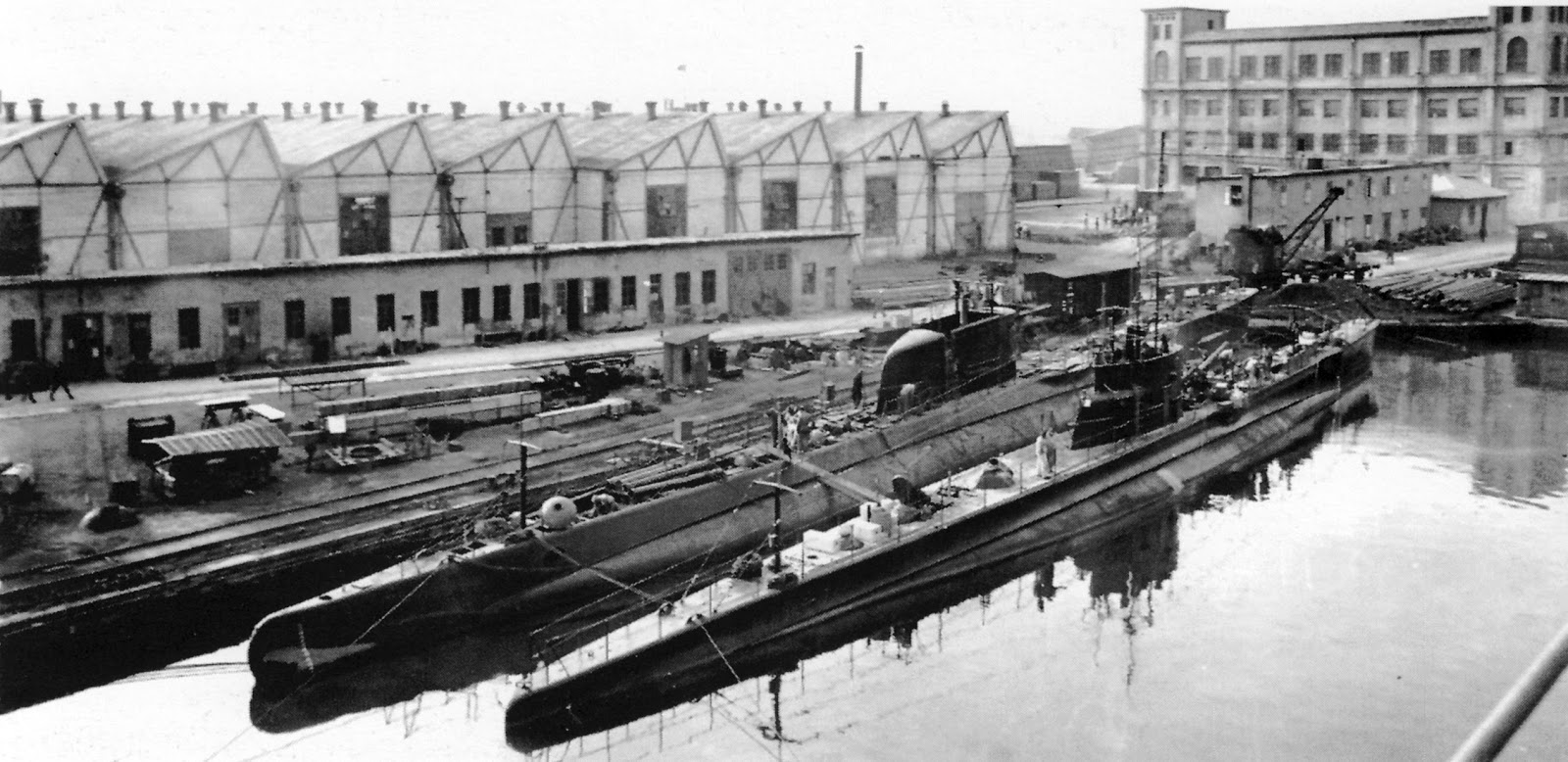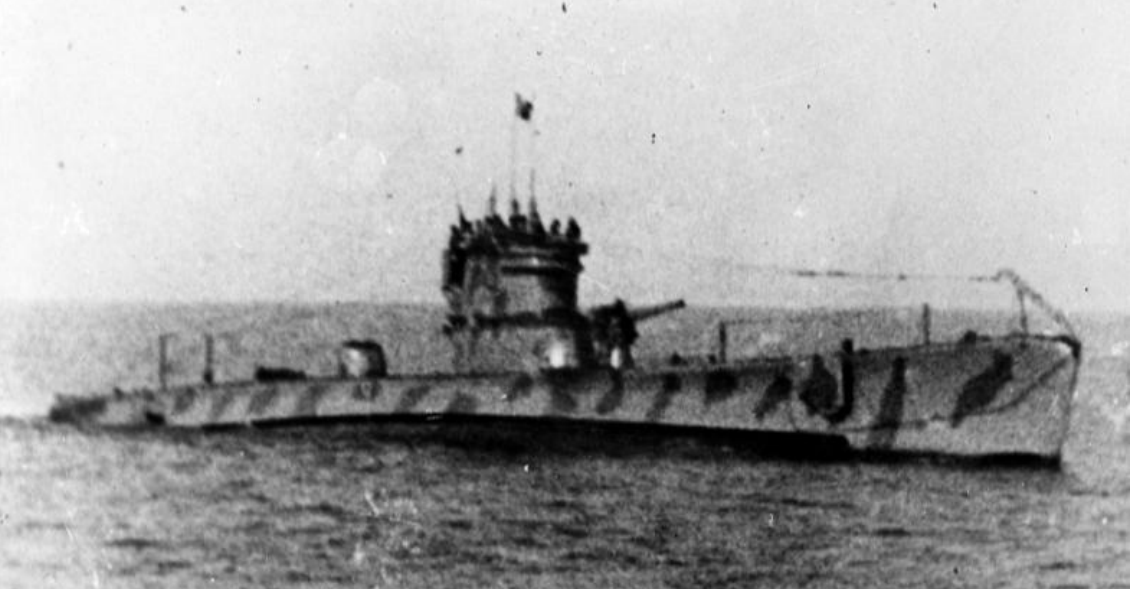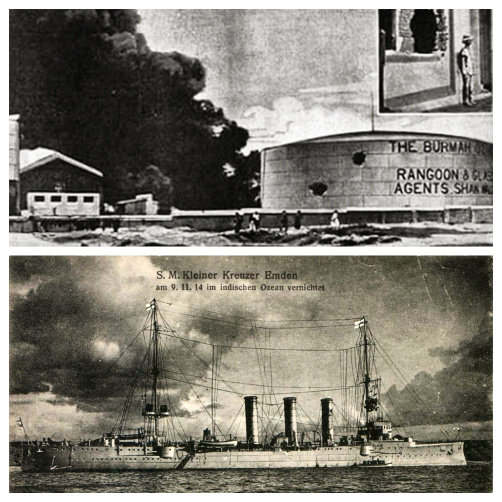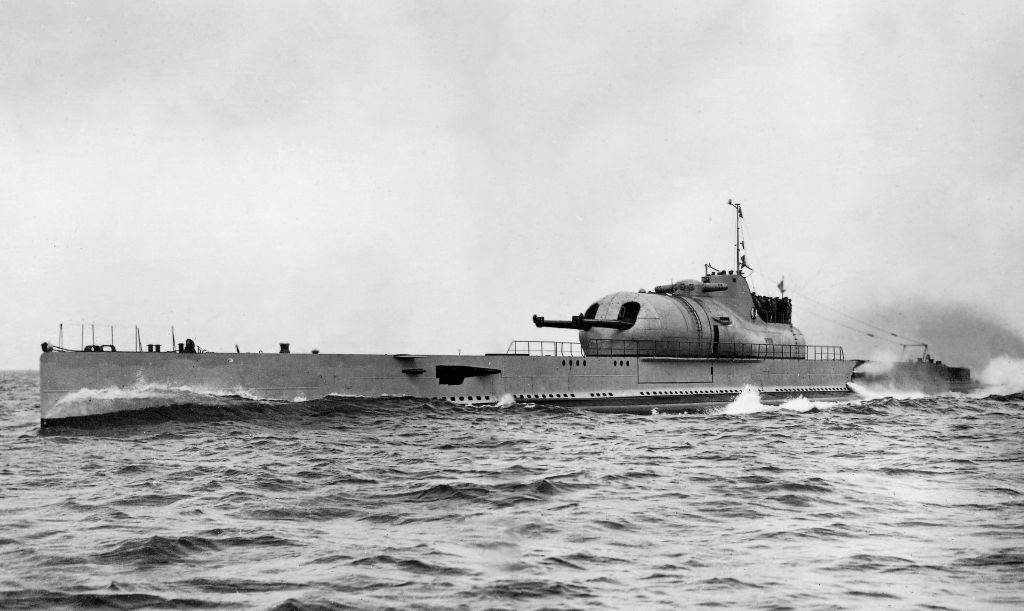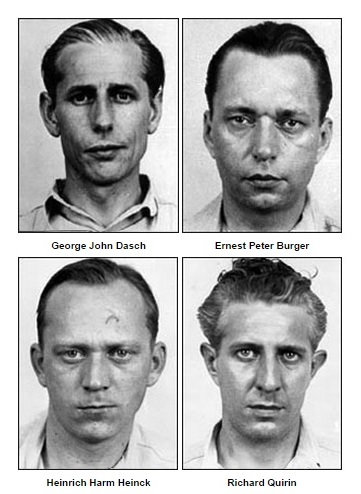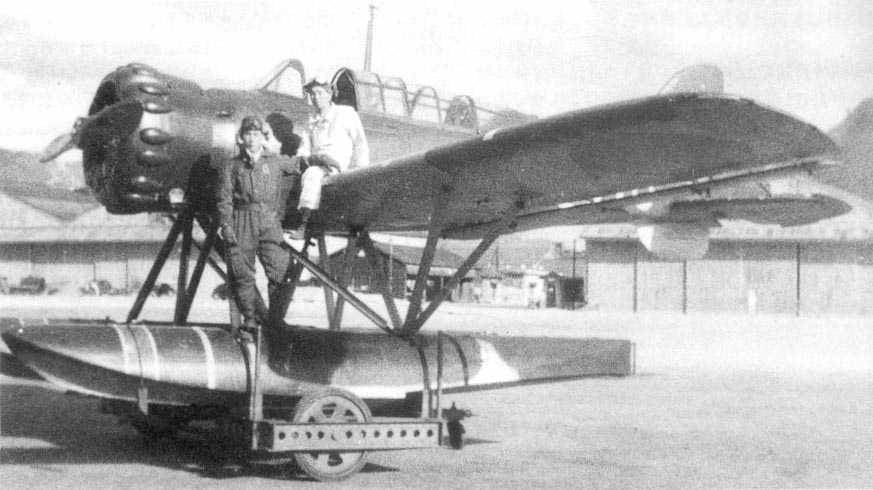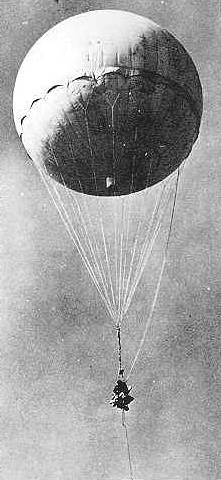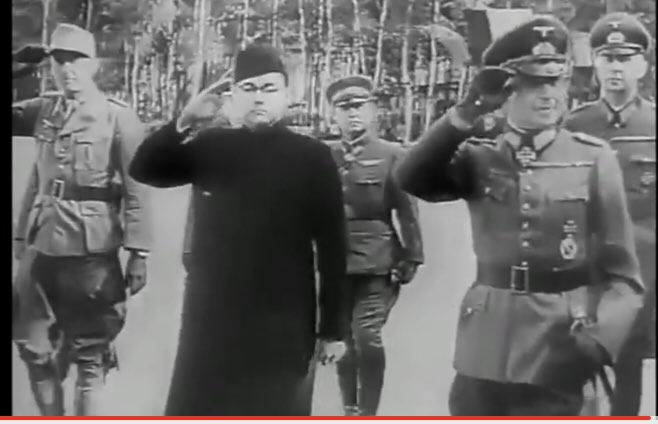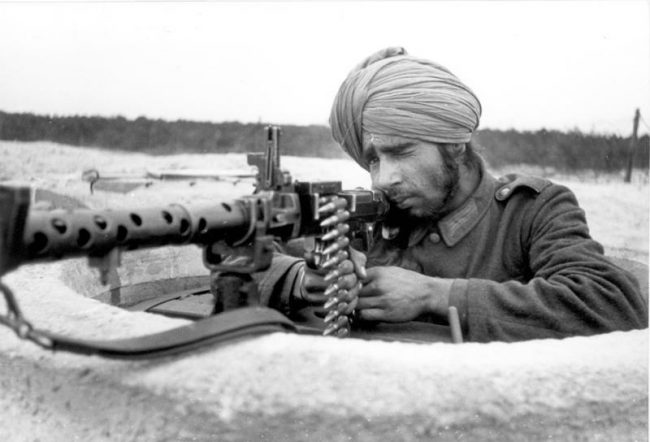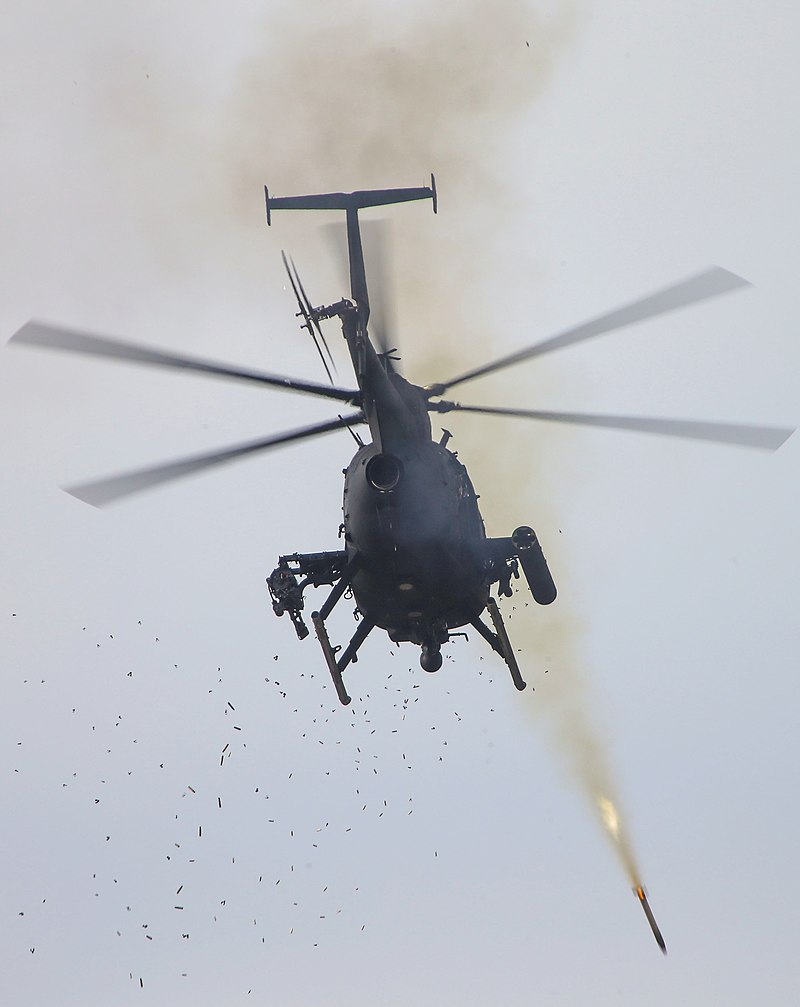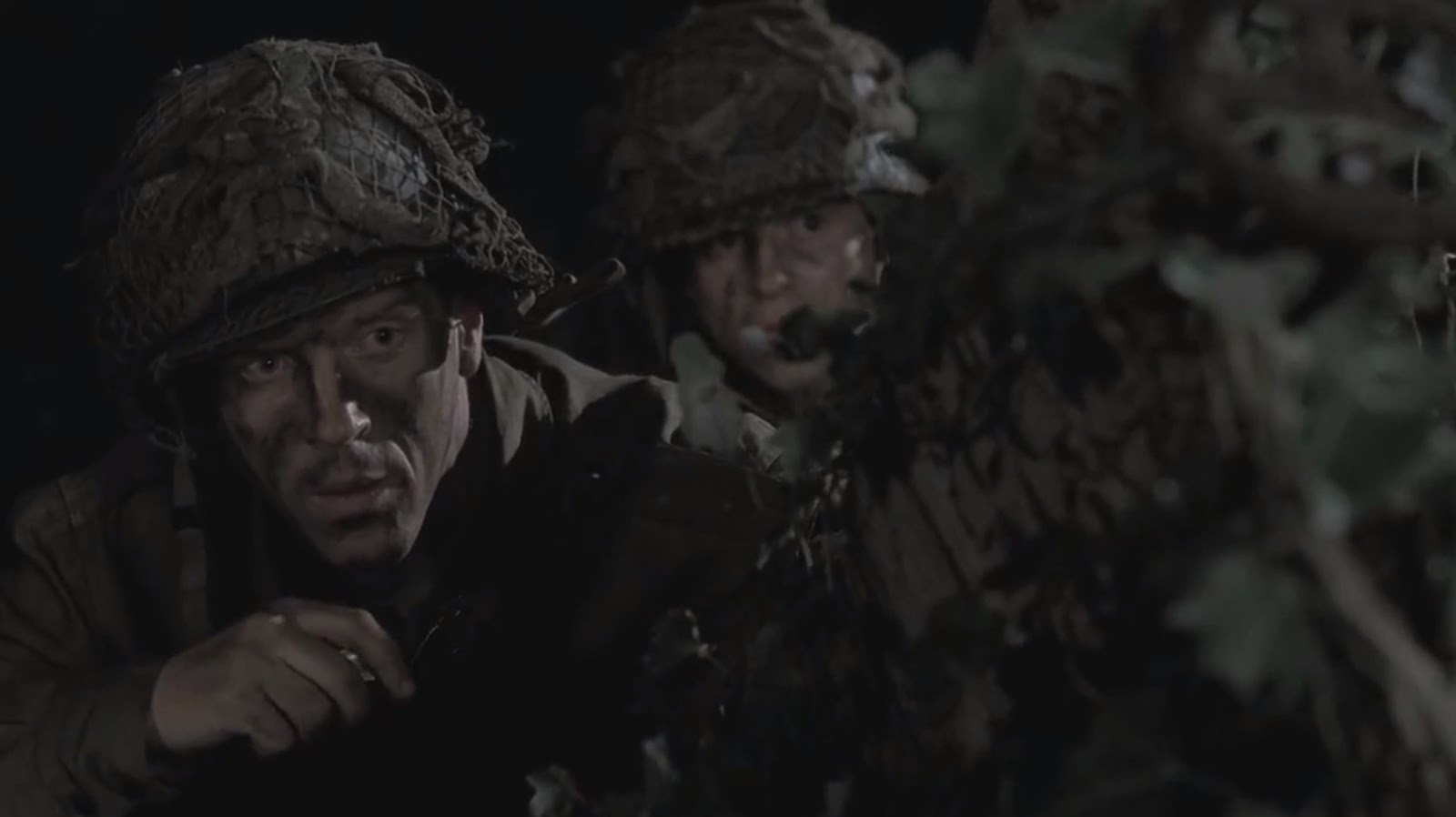- Posts: 1256
- Thank you received: 1781
Sidebar
Login Form
Little stories
- Maki
-

- Offline
Less
More
3 years 6 months ago #37
by Maki
Replied by Maki on topic Little stories
The military origins of the necktie
The Croatian Cravat Regiment
The Thirty Years' War was fought from 1618-1648 primarily in Central Europe. France entered the war in 1635 and, in order to augment his own forces, King Louis XIII hired Croatian mercenaries from the Croatian Military Frontier to fight for him. These mercenaries wore traditional knotted neckerchiefs which tied the tops of their jackets. Although they were designed to be purely functional, the ties had a decorative effect that piqued the interest of the ever fashion-conscious Parisians. In fact, the Croatian neckties caught the attention of the king who found them rather appealing. He liked the garment so much that he made the ties a mandatory accessory for royal gatherings. In honor of the Croats who introduced the ties, he named the garment "la cravate"—derived from the French word Croates meaning Croats.
Following the introduction of the tie and the death of King Louis XIII, the boy-king Louis XIV began to wear a lace cravat around 1646 at the age of seven. This set the fashion trend for French nobility who quickly donned lace cravats as well. These lace cravats, or jabots, were tied in place by cravat strings, arranged neatly with great time and effort, and tied in a bow. Soon, the trend spread across Europe like wildfire and both men and women were wearing fabric neck pieces as a sign of wealth and status.
In the 18th century, the cravat evolved to include the Steinkirk, a type of cravat designed to be worn in deliberate disarray. Yet again, this fashion trend evolved from the military as a result of the Nine Years' War. According to Voltaire, the fashion trend originated at the Battle of Steenkerque where the French were attacked by surprise forcing the French gentlemen to hurriedly don their cravats and wear them in disarray throughout the fight.
The 18th century saw another evolution of neckwear with the introduction of stocks in 1715. Stock ties were worn as everyday apparel throughout the 18th and 19th century, but became a more formal garment in the later 19th century. They are still worn today by equestrians, especially in dressage where the ties are often mandatory and required to be white. The term originally applied to a leather collar, laced at the back, and worn by soldiers to promote holding their heads high in a military manner. Leather stocks also served a practical battlefield purpose; the layer of leather around the neck afforded some protection against saber or bayonet strikes. The leather stock saw continued use into the 19th century and gave the United States Marines their nickname of "Leathernecks". The modern Marine dress uniform pays homage to leather stocks with its stiff standing collar.
General William T. Sherman is also seen wearing a leather stock along with his necktie in many of his Civil War-era photographs.
William Tecumseh Sherman
The industrial revolution saw the demand for neckwear that was easier to put on, more comfortable, and could last an entire work day without needing to be readjusted. This demand was met with the traditional long necktie that we are familiar with today. Neckwear has come a long way from King Louis XIII's adoption of the cravat and its evolution and constant influence by the military is a bit of sartorial history that we can still see today
The Croatian Cravat Regiment
The Thirty Years' War was fought from 1618-1648 primarily in Central Europe. France entered the war in 1635 and, in order to augment his own forces, King Louis XIII hired Croatian mercenaries from the Croatian Military Frontier to fight for him. These mercenaries wore traditional knotted neckerchiefs which tied the tops of their jackets. Although they were designed to be purely functional, the ties had a decorative effect that piqued the interest of the ever fashion-conscious Parisians. In fact, the Croatian neckties caught the attention of the king who found them rather appealing. He liked the garment so much that he made the ties a mandatory accessory for royal gatherings. In honor of the Croats who introduced the ties, he named the garment "la cravate"—derived from the French word Croates meaning Croats.
Following the introduction of the tie and the death of King Louis XIII, the boy-king Louis XIV began to wear a lace cravat around 1646 at the age of seven. This set the fashion trend for French nobility who quickly donned lace cravats as well. These lace cravats, or jabots, were tied in place by cravat strings, arranged neatly with great time and effort, and tied in a bow. Soon, the trend spread across Europe like wildfire and both men and women were wearing fabric neck pieces as a sign of wealth and status.
In the 18th century, the cravat evolved to include the Steinkirk, a type of cravat designed to be worn in deliberate disarray. Yet again, this fashion trend evolved from the military as a result of the Nine Years' War. According to Voltaire, the fashion trend originated at the Battle of Steenkerque where the French were attacked by surprise forcing the French gentlemen to hurriedly don their cravats and wear them in disarray throughout the fight.
The 18th century saw another evolution of neckwear with the introduction of stocks in 1715. Stock ties were worn as everyday apparel throughout the 18th and 19th century, but became a more formal garment in the later 19th century. They are still worn today by equestrians, especially in dressage where the ties are often mandatory and required to be white. The term originally applied to a leather collar, laced at the back, and worn by soldiers to promote holding their heads high in a military manner. Leather stocks also served a practical battlefield purpose; the layer of leather around the neck afforded some protection against saber or bayonet strikes. The leather stock saw continued use into the 19th century and gave the United States Marines their nickname of "Leathernecks". The modern Marine dress uniform pays homage to leather stocks with its stiff standing collar.
General William T. Sherman is also seen wearing a leather stock along with his necktie in many of his Civil War-era photographs.
William Tecumseh Sherman
The industrial revolution saw the demand for neckwear that was easier to put on, more comfortable, and could last an entire work day without needing to be readjusted. This demand was met with the traditional long necktie that we are familiar with today. Neckwear has come a long way from King Louis XIII's adoption of the cravat and its evolution and constant influence by the military is a bit of sartorial history that we can still see today
The following user(s) said Thank You: snowman, Damni
Please Log in or Create an account to join the conversation.
- snowman
-
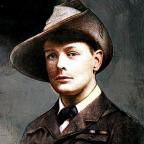
- Offline
- Your most dear friend.
3 years 6 months ago #38
by snowman
"Straight and narrow is the path."
Replied by snowman on topic Little stories
The unknown story of the Italian submarine “Axum”, lost in Greece, 29 December 1943
Italian submarine Axum was built in the 1930s, serving in the Regia Marina during World War II. She was named after an ancient city of Axum in Ethiopia. Axum was built at the CRDA shipyard, in Monfalcone, laid down on 8 February 1936 and commissioned on 2 December that year.
Between August 27 and September 5, 1937 she performed a secret mission on behalf of the Spanish Nationalists in the Strait of Sicily but did not detect any targets. After spending the early years of the war close to Sardinia, then moving to Algeria and Tunisia, on June 20, 1941, received orders to move closer to Benghazi. On June 23, 1941, around 22:26 she sighted a ship heading west and launched a torpedo, but it missed due to irregular running. Axum launched a second torpedo, but it also missed the ship, passing a few meters by the stern. The ship returned fire and the submarine was forced to dive and get through a brief but intense depth charge attack, without suffering any damage.
In mid-August 1942, Axum was assigned with many other submarines to intercept a British convoy, part of Operation Pedestal. Axum launched a salvo of all four torpedoes. The first torpedo struck modern light cruiser HMS Nigeria, flagship of Admiral Harold Burrough, two torpedoes then struck HMS Cairo that had to be scuttled. Finally, the fourth torpedo struck tanker SS Ohio, causing heavy damage. It was probably the most important merchant ship of the convoy, being the only oil tanker carrying fuel for Malta. Within twenty minutes, the tanker's crew was able to extinguish the fires and continue at 13 knots despite damage. The ship was hit by several bombs on her journey, but the superhuman determination of her crew, and support of several destroyers that guarded her, allowed SS Ohio to reach Malta on 15 August 1942. After unloading fuel, SS Ohio finally sank, breaking in two in Malta's harbor.
At the announcement of the armistice, on September 8, 1943 Axum (under command of captain Vittorio Barra) was in Gaeta to carry out repair work on diesel engines. Early on September 9, 1943, Germans tried to capture ships in the harbor, and at 2:15 Axum managed to get away with only one engine running. Captain Barra took the boat to island of Montecristo where the submarine spent a night. On September 10, 1943, she reached Portoferraio, and from there proceeded to Palermo.
For the rest of the war, Axum was used only to infiltration missions (bringing and taking spies and sabotage teams from German-occupied territories). During one of those missions, on December 25, 1943 Axum, under command of captain Giovanni Sorrentino, left Taranto to recover spies from the Gulf of Kyparissia. In the evening of December 27, Axum arrived at the rendezvous point on the west coast of Morea. While waiting for a sailboat to bring back the spies, Axum was drifting towards the coast when she ran aground on unknown rock formation. All efforts to dislodge the submarine failed, so in the afternoon of December 28, 1943 commander Sorrentino ordered the boat scuttled with explosive charges at Kaifas beach, in the position 37°31′N 21°35′E. The submarine crew and the spies had to spend a month in Morea mountains. Finally, at the end of January 1944, the crew and the spies were picked off Marathopolis (now part of Gargalianoi), near Proti Island by torpedo escort Ardimentoso.
Italian submarine Axum was built in the 1930s, serving in the Regia Marina during World War II. She was named after an ancient city of Axum in Ethiopia. Axum was built at the CRDA shipyard, in Monfalcone, laid down on 8 February 1936 and commissioned on 2 December that year.
Between August 27 and September 5, 1937 she performed a secret mission on behalf of the Spanish Nationalists in the Strait of Sicily but did not detect any targets. After spending the early years of the war close to Sardinia, then moving to Algeria and Tunisia, on June 20, 1941, received orders to move closer to Benghazi. On June 23, 1941, around 22:26 she sighted a ship heading west and launched a torpedo, but it missed due to irregular running. Axum launched a second torpedo, but it also missed the ship, passing a few meters by the stern. The ship returned fire and the submarine was forced to dive and get through a brief but intense depth charge attack, without suffering any damage.
In mid-August 1942, Axum was assigned with many other submarines to intercept a British convoy, part of Operation Pedestal. Axum launched a salvo of all four torpedoes. The first torpedo struck modern light cruiser HMS Nigeria, flagship of Admiral Harold Burrough, two torpedoes then struck HMS Cairo that had to be scuttled. Finally, the fourth torpedo struck tanker SS Ohio, causing heavy damage. It was probably the most important merchant ship of the convoy, being the only oil tanker carrying fuel for Malta. Within twenty minutes, the tanker's crew was able to extinguish the fires and continue at 13 knots despite damage. The ship was hit by several bombs on her journey, but the superhuman determination of her crew, and support of several destroyers that guarded her, allowed SS Ohio to reach Malta on 15 August 1942. After unloading fuel, SS Ohio finally sank, breaking in two in Malta's harbor.
At the announcement of the armistice, on September 8, 1943 Axum (under command of captain Vittorio Barra) was in Gaeta to carry out repair work on diesel engines. Early on September 9, 1943, Germans tried to capture ships in the harbor, and at 2:15 Axum managed to get away with only one engine running. Captain Barra took the boat to island of Montecristo where the submarine spent a night. On September 10, 1943, she reached Portoferraio, and from there proceeded to Palermo.
For the rest of the war, Axum was used only to infiltration missions (bringing and taking spies and sabotage teams from German-occupied territories). During one of those missions, on December 25, 1943 Axum, under command of captain Giovanni Sorrentino, left Taranto to recover spies from the Gulf of Kyparissia. In the evening of December 27, Axum arrived at the rendezvous point on the west coast of Morea. While waiting for a sailboat to bring back the spies, Axum was drifting towards the coast when she ran aground on unknown rock formation. All efforts to dislodge the submarine failed, so in the afternoon of December 28, 1943 commander Sorrentino ordered the boat scuttled with explosive charges at Kaifas beach, in the position 37°31′N 21°35′E. The submarine crew and the spies had to spend a month in Morea mountains. Finally, at the end of January 1944, the crew and the spies were picked off Marathopolis (now part of Gargalianoi), near Proti Island by torpedo escort Ardimentoso.
"Straight and narrow is the path."
The following user(s) said Thank You: Damni, Maki, Odysseus
Please Log in or Create an account to join the conversation.
- Maki
-

- Offline
Less
More
- Posts: 1256
- Thank you received: 1781
3 years 6 months ago - 3 years 6 months ago #39
by Maki
Replied by Maki on topic Little stories
A fake smokestack made this German ship an unstoppable predator
During World War I, a new German warship slipped into the largely Allied-controlled Indian Ocean and captured or sunk 30 Allied ships and 25 civilian ships while attacking multiple shore installations in a short-lived, pirate-like rampage that lasted only about 90 days but terrorized British shippers.
The SMS Emden was supposed to be a nice ship, but not all that crazy important in war. It was a light cruiser, a utilitarian ship type that is quick, capable, but not all that robust or rugged. These ships are typically designed for low-level conflict or serve as a guard or screening force for larger ships like battleships or, later, carriers.
But the Emden would steam into Allied controlled waters in early 1914, attacking literally dozens of enemy ships and counting on its speed and a little trickery to let it hit and then withdraw in a series of daring raids.
Sea Raider
It all started in 1913 when the young SMS Emden received a new commander, Korvettenkapitän Karl von Muller (Korvettenkapitän is roughly equivalent to America's lieutenant commander rank). Von Muller was the son of a German army officer, and he had risen to his rank by performing well in front of Germany's elite, including the German emperor's brother.
One of von Muller's distinguishing traits was a sort of cunning shrewdness, something that would serve him well on the Emden. In 1914, the assassination of Archduke Franz Ferdinand of Austria quickly dragged the major European powers toward war, and von Muller ordered the Emden to sea to prevent its capture in the largely British and Japanese-controlled Pacific islands where the ship was based.
This proved prescient as raiders quickly came for the German fleet. The Emden reported to a rallying point where most of the German navy would meet up to head east to South America, around Cape Horn, and on to Germany. On his way to the rally, von Muller captured the Russian ship Ryazan. When Emden reached the German fleet with its prize, von Muller had a proposal for the admiral.
Instead of heading home to Germany, von Muller said, the Emden should head west and raid Allied shipping, especially that of British ships, for a few months and create chaos in the enemy logistics chain.
Light cruisers lacked the armor or heavier guns common on heavy cruisers or larger ships, but they were still more than a match for destroyers and merchant vessels. And the Emden had torpedo tubes that would allow it to tackle even heavier combatants if it could get the jump on them.
Despite the risk of losing the Emden, a modern and valuable cruiser even if it was light, the admiral agreed to the plan. So von Muller led his crew of about 360 men into the Indian Ocean.
The Emden would need some sort of edge to survive. It was fast, so it could close with enemies quickly, partially negating any range advantages that heavier combatants would have against it. But it would still be vulnerable for crucial seconds or minutes while closing with an enemy.
So von Muller turned to subterfuge. Most British ships had two or four smokestacks, and the Emden would be one of the only ships in the area with three smokestacks. So, von Muller had a fourth, fake smokestack installed on the Emden, making it look a lot like the British cruiser HMS Yarmouth.
This might seem like a minor ploy, good for a few minutes of distraction at best, but that momentary hesitation on the part of the enemy gave von Muller and his crew all the time they needed. In just a few days of fighting in September 1914, the Emden captured or destroyed 15 British ships, forcing many merchant vessels to stay in port.
Suddenly, the British ability to resupply vulnerable islands was crippled, and valuable ships would have to be sent to the Indian Ocean to reinforce the naval effort there.
But the sudden lack of targets at sea did not stop the Emden. The crew simply started going after shore targets like the oil depots at Madras. The Emden fired 125 shells in a short engagement on September 22, busting open many of the Burma Oil Company's tanks and setting them aflame while also destroying a ship in the harbor.
Between this and earlier attacks, the British decided to cut the number of ships, and potential targets, in the Indian Ocean by 40 percent. This slowed the bleeding of the Royal Navy and merchant vessels but also further slowed the movement of needed war supplies.
But the Emden had taken damage and was running low on supplies by this point, and so it made a risky trip to Diego Garcia where it could attempt to raid needed supplies from the British installations there. But, surprisingly, the Germans found that the locals had no news of the young war when the Emden pulled into harbor, so the German crew simply contracted for repair and supplies without incident.
Freshly resupplied and repaired, the Emden went after British installations at Penang in Malaysia, initiating a short battle there. The primary target was the Russian warship Zhemchung which the Emden hit with torpedoes and cannon fire after approaching under false British colors and with the fake smokestack up.
The Emden sank the Russian vessel and then beat a hasty retreat, but not so hasty that the ship neglected sinking the Mousquet, a French destroyer, while exiting the harbor. This was late October, and the little cruiser had already more than proved its worth in the East, but von Muller wasn't willing to call it quits.
Other German cruisers had successfully snipped undersea wires in their own raids, and von Muller went after the telegraph wire connecting British troops in South Africa to those in Australia. The wire had a major junction at Direction Island in the Cocos Islands.
The German light cruiser SMS Emden sits beached after a determined attack by the HMAS Sydney.
The Emden landed a shore party there and quickly went after the two cables. But as it pulled into the harbor, the Morse operator sent off a quick burst via the station's wireless system, alerting a nearby cruiser to the unfamiliar ship in the harbor.
The Emden's shore party was working the destruction of the cables and the wireless antenna when the Australian HMAS Sydney arrived to investigate, forcing the Emden to turn and face her. This effectively marooned the shore party on land, but the Emden was in a fight for its life.
The Sydney was also a light cruiser, but it was roughly a quarter larger than the Emden and slightly more modern, and it quickly gained the upper hand in the fight. The Emden was doomed, and von Muller quickly beached it on a reef. The German ship had suffered over 100 hits in about 90 minutes of fighting. It only stopped after von Muller surrendered.
Crew of SMS Emden Abandoning Their Beached Ship
The shore party would slowly, laboriously make its way back to Germany by sailing to Indonesia, then to the Ottoman Empire, then traveled across the desert in a failed overland bid for safety, then ran a British blockade on the Red Sea, then, finally, overland to Constantinople. It was a six-month journey, but 43 men made it back to Germany.
During World War I, a new German warship slipped into the largely Allied-controlled Indian Ocean and captured or sunk 30 Allied ships and 25 civilian ships while attacking multiple shore installations in a short-lived, pirate-like rampage that lasted only about 90 days but terrorized British shippers.
The SMS Emden was supposed to be a nice ship, but not all that crazy important in war. It was a light cruiser, a utilitarian ship type that is quick, capable, but not all that robust or rugged. These ships are typically designed for low-level conflict or serve as a guard or screening force for larger ships like battleships or, later, carriers.
But the Emden would steam into Allied controlled waters in early 1914, attacking literally dozens of enemy ships and counting on its speed and a little trickery to let it hit and then withdraw in a series of daring raids.
Sea Raider
It all started in 1913 when the young SMS Emden received a new commander, Korvettenkapitän Karl von Muller (Korvettenkapitän is roughly equivalent to America's lieutenant commander rank). Von Muller was the son of a German army officer, and he had risen to his rank by performing well in front of Germany's elite, including the German emperor's brother.
One of von Muller's distinguishing traits was a sort of cunning shrewdness, something that would serve him well on the Emden. In 1914, the assassination of Archduke Franz Ferdinand of Austria quickly dragged the major European powers toward war, and von Muller ordered the Emden to sea to prevent its capture in the largely British and Japanese-controlled Pacific islands where the ship was based.
This proved prescient as raiders quickly came for the German fleet. The Emden reported to a rallying point where most of the German navy would meet up to head east to South America, around Cape Horn, and on to Germany. On his way to the rally, von Muller captured the Russian ship Ryazan. When Emden reached the German fleet with its prize, von Muller had a proposal for the admiral.
Instead of heading home to Germany, von Muller said, the Emden should head west and raid Allied shipping, especially that of British ships, for a few months and create chaos in the enemy logistics chain.
Light cruisers lacked the armor or heavier guns common on heavy cruisers or larger ships, but they were still more than a match for destroyers and merchant vessels. And the Emden had torpedo tubes that would allow it to tackle even heavier combatants if it could get the jump on them.
Despite the risk of losing the Emden, a modern and valuable cruiser even if it was light, the admiral agreed to the plan. So von Muller led his crew of about 360 men into the Indian Ocean.
The Emden would need some sort of edge to survive. It was fast, so it could close with enemies quickly, partially negating any range advantages that heavier combatants would have against it. But it would still be vulnerable for crucial seconds or minutes while closing with an enemy.
So von Muller turned to subterfuge. Most British ships had two or four smokestacks, and the Emden would be one of the only ships in the area with three smokestacks. So, von Muller had a fourth, fake smokestack installed on the Emden, making it look a lot like the British cruiser HMS Yarmouth.
This might seem like a minor ploy, good for a few minutes of distraction at best, but that momentary hesitation on the part of the enemy gave von Muller and his crew all the time they needed. In just a few days of fighting in September 1914, the Emden captured or destroyed 15 British ships, forcing many merchant vessels to stay in port.
Suddenly, the British ability to resupply vulnerable islands was crippled, and valuable ships would have to be sent to the Indian Ocean to reinforce the naval effort there.
But the sudden lack of targets at sea did not stop the Emden. The crew simply started going after shore targets like the oil depots at Madras. The Emden fired 125 shells in a short engagement on September 22, busting open many of the Burma Oil Company's tanks and setting them aflame while also destroying a ship in the harbor.
Between this and earlier attacks, the British decided to cut the number of ships, and potential targets, in the Indian Ocean by 40 percent. This slowed the bleeding of the Royal Navy and merchant vessels but also further slowed the movement of needed war supplies.
But the Emden had taken damage and was running low on supplies by this point, and so it made a risky trip to Diego Garcia where it could attempt to raid needed supplies from the British installations there. But, surprisingly, the Germans found that the locals had no news of the young war when the Emden pulled into harbor, so the German crew simply contracted for repair and supplies without incident.
Freshly resupplied and repaired, the Emden went after British installations at Penang in Malaysia, initiating a short battle there. The primary target was the Russian warship Zhemchung which the Emden hit with torpedoes and cannon fire after approaching under false British colors and with the fake smokestack up.
The Emden sank the Russian vessel and then beat a hasty retreat, but not so hasty that the ship neglected sinking the Mousquet, a French destroyer, while exiting the harbor. This was late October, and the little cruiser had already more than proved its worth in the East, but von Muller wasn't willing to call it quits.
Other German cruisers had successfully snipped undersea wires in their own raids, and von Muller went after the telegraph wire connecting British troops in South Africa to those in Australia. The wire had a major junction at Direction Island in the Cocos Islands.
The German light cruiser SMS Emden sits beached after a determined attack by the HMAS Sydney.
The Emden landed a shore party there and quickly went after the two cables. But as it pulled into the harbor, the Morse operator sent off a quick burst via the station's wireless system, alerting a nearby cruiser to the unfamiliar ship in the harbor.
The Emden's shore party was working the destruction of the cables and the wireless antenna when the Australian HMAS Sydney arrived to investigate, forcing the Emden to turn and face her. This effectively marooned the shore party on land, but the Emden was in a fight for its life.
The Sydney was also a light cruiser, but it was roughly a quarter larger than the Emden and slightly more modern, and it quickly gained the upper hand in the fight. The Emden was doomed, and von Muller quickly beached it on a reef. The German ship had suffered over 100 hits in about 90 minutes of fighting. It only stopped after von Muller surrendered.
Crew of SMS Emden Abandoning Their Beached Ship
The shore party would slowly, laboriously make its way back to Germany by sailing to Indonesia, then to the Ottoman Empire, then traveled across the desert in a failed overland bid for safety, then ran a British blockade on the Red Sea, then, finally, overland to Constantinople. It was a six-month journey, but 43 men made it back to Germany.
Last edit: 3 years 6 months ago by snowman. Reason: The color BLUE was missing in one of the paragraphs :D
The following user(s) said Thank You: snowman, Nikita, WANGER
Please Log in or Create an account to join the conversation.
- Maki
-

- Offline
Less
More
- Posts: 1256
- Thank you received: 1781
3 years 5 months ago #40
by Maki
Replied by Maki on topic Little stories
5 times the US was attacked at home during WWII (besides Pearl Harbor)
For decades before 9/11, Americans talked about how they hadn't been attacked at home since Pearl Harbor, but that actually wasn't true.
The California coast was attacked less than three months later, and two additional attacks were launched in 1942 alone. Here are five times that America was attacked at home in World War II after Pearl Harbor:
1. Japanese submarines shell California oil refinery
In February 1942, Japan landed its first attack on the American mainland. Submarine I-17 surfaced off the coast of California and proceeded to shell oil processing facilities in Ellwood, a city north of Santa Barbara. The Ellwood attack was believed to have been intentionally timed to take place during one of President Franklin Roosevelt's fireside chats.
The attack did little real damage. An oil derrick and a pump house were both hit but no personnel were injured or killed and refining operations continued throughout the war.
2. Nazi commandos land in New York and Florida
The German sabotage ring commandos assigned to attack New York and the surrounding area. (Photos: FBI)
The following June, the Axis powers struck again as specially trained Nazi commandos were delivered by submarine to beaches in New York and Florida. They came heavily armed with crates of explosives and lists of targets including aluminum plants and power production.
Luckily for America, the commandos had been recruited from the civilian population and the Nazi party and they were inept. One of the team leaders had slept through much of the 18 days of special training.
The first team was spotted by the Coast Guard while burying their supplies on the New York beach. They got away, but both teams were hunted down by the FBI before they launched any successful operations.
3 . A Japanese submarine shells military defenses in Oregon
An I-25 submarine ordered to patrol the American coast surfaced during the night of June 21, 1942, and shelled the coastal defenses at Fort Stevens, Oregon. Most of the rounds buried themselves in the sand on the shore and the damage to the U.S. was mostly on morale.
4. A Japanese plane drops bombs on a logging town
Nobuo Fujita stands with his E14Y plane, the same model he used to bomb Oregon. (Photo: Public Domain)
Unfortunately for the Japanese, they had little knowledge of the weather conditions in their target area. The woods had been unseasonably wet from recent rains and thick fogs, so the fires failed to spread.
Still, the FBI and the U.S. Army worried that another attack would be more successful.
The Japanese did indeed try again on Sept. 25, but the fires failed to spread once again.
Fujita was hailed as a hero at home and served out the war training kamikaze pilots. Oddly enough in 1962, the town of Brookings, Oregon, invited Fujita to the city he tried to destroy. This resulted in a friendship that lasted the rest of the man's life.
He gave his family's ceremonial sword to the city and, after his death, some of his ashes were spread at the bomb crater.
5. Almost ten thousand fire balloons are floated across the Pacific
This was the first intercontinental weapon in military history — the fūsen bakudan, or fire balloon. Japan produced 9,300 of them.
In Operation Fu-Go in 1944, the Japanese military tried to set America aflame by floating 9,300 incendiary bombs across the Pacific Ocean. The bombs were expected to travel on the wind for three days and then drop, setting large fires.
Only 350 bombs actually made it to the states and spread far and wide, hitting states like Michigan, Iowa, and Kansas. Most failed to start large fires. The only known fatalities from the weapon was when a pregnant woman and her five children came across an unexploded bomb in Oregon.
It exploded while the family was looking at it, killing all six.
For decades before 9/11, Americans talked about how they hadn't been attacked at home since Pearl Harbor, but that actually wasn't true.
The California coast was attacked less than three months later, and two additional attacks were launched in 1942 alone. Here are five times that America was attacked at home in World War II after Pearl Harbor:
1. Japanese submarines shell California oil refinery
In February 1942, Japan landed its first attack on the American mainland. Submarine I-17 surfaced off the coast of California and proceeded to shell oil processing facilities in Ellwood, a city north of Santa Barbara. The Ellwood attack was believed to have been intentionally timed to take place during one of President Franklin Roosevelt's fireside chats.
The attack did little real damage. An oil derrick and a pump house were both hit but no personnel were injured or killed and refining operations continued throughout the war.
2. Nazi commandos land in New York and Florida
The German sabotage ring commandos assigned to attack New York and the surrounding area. (Photos: FBI)
The following June, the Axis powers struck again as specially trained Nazi commandos were delivered by submarine to beaches in New York and Florida. They came heavily armed with crates of explosives and lists of targets including aluminum plants and power production.
Luckily for America, the commandos had been recruited from the civilian population and the Nazi party and they were inept. One of the team leaders had slept through much of the 18 days of special training.
The first team was spotted by the Coast Guard while burying their supplies on the New York beach. They got away, but both teams were hunted down by the FBI before they launched any successful operations.
3 . A Japanese submarine shells military defenses in Oregon
An I-25 submarine ordered to patrol the American coast surfaced during the night of June 21, 1942, and shelled the coastal defenses at Fort Stevens, Oregon. Most of the rounds buried themselves in the sand on the shore and the damage to the U.S. was mostly on morale.
4. A Japanese plane drops bombs on a logging town
Nobuo Fujita stands with his E14Y plane, the same model he used to bomb Oregon. (Photo: Public Domain)
Unfortunately for the Japanese, they had little knowledge of the weather conditions in their target area. The woods had been unseasonably wet from recent rains and thick fogs, so the fires failed to spread.
Still, the FBI and the U.S. Army worried that another attack would be more successful.
The Japanese did indeed try again on Sept. 25, but the fires failed to spread once again.
Fujita was hailed as a hero at home and served out the war training kamikaze pilots. Oddly enough in 1962, the town of Brookings, Oregon, invited Fujita to the city he tried to destroy. This resulted in a friendship that lasted the rest of the man's life.
He gave his family's ceremonial sword to the city and, after his death, some of his ashes were spread at the bomb crater.
5. Almost ten thousand fire balloons are floated across the Pacific
This was the first intercontinental weapon in military history — the fūsen bakudan, or fire balloon. Japan produced 9,300 of them.
In Operation Fu-Go in 1944, the Japanese military tried to set America aflame by floating 9,300 incendiary bombs across the Pacific Ocean. The bombs were expected to travel on the wind for three days and then drop, setting large fires.
Only 350 bombs actually made it to the states and spread far and wide, hitting states like Michigan, Iowa, and Kansas. Most failed to start large fires. The only known fatalities from the weapon was when a pregnant woman and her five children came across an unexploded bomb in Oregon.
It exploded while the family was looking at it, killing all six.
The following user(s) said Thank You: snowman, Nikita, Damni
Please Log in or Create an account to join the conversation.
- Maki
-

- Offline
Less
More
- Posts: 1256
- Thank you received: 1781
3 years 5 months ago #41
by Maki
Replied by Maki on topic Little stories
This Indian military unit fought for the Nazis
During World War II, the military force aiming to install an Aryan master race over the world found potentially unlikely allies on the subcontinent of India where thousands of soldiers joined the “Free Indian Legion,” fighting on behalf of the Nazis against the Allied Powers from the China-Burma-India Theater to the Atlantic Wall on D-Day.
Hitler’s Indian Regiment
India was a British colony during World War II that sent millions of loyal subjects to fight on behalf of King George VI, but the relationship between Britain and India was strained—to say the least—when the war started. India had been agitating for independence from the East India Company and then the British Crown for about a century.
Indian troops serving Great Britain fought valiantly and earned top awards for heroism in the battle against the Axis Powers, but not all Indian leaders thought the fight against fascism should trump the fight for Indian independence. Much like American patriots in the 1770s capitalized on Britain’s fighting with France, some Indian leaders thought Britain’s war with Germany was the perfect time to break away from the crown.
And the Nazis were happy to help. When they began to take Indian troops prisoner in Africa, they offered those men German uniforms, weapons, and training if they would take up arms against the British. The first 27, all seen as potential officers, were pulled out of German POW camps and sent to Germany for training in 1941. These were soon followed by thousands of others to fill out the ranks.
An Indian independence leader, Subhas Chandra Bose, helped start the legion and got serious concessions from Germany on how the troops would be trained, deployed, equipped, paid, and more. Basically, the agreement was that the unit would be trained, paid, and equipped at the same level as any normal German unit.
But, the Indian troops could not be deployed like normal German units. The agreement that formed the unit would limit it to combat deployments focused on overthrowing British control of India. So Germany had to fund the unit like any German force, but they could only use it for Indian independence.
But still, the trade-off was seen as worthwhile by Germany as it struggled with how it would one day root British forces out of the jungles of Asia. This worry would prove well-founded when Britain and India began sending “Chindits” into the jungles to break the logistics chains and defensive lines of Japanese forces.
A member of the Indian Legion mans an MG42 near Bordeaux on the Atlantic Wall.
So the Indian Legion was formed and given a distinctive badge of a leaping tiger. But, in direct contradiction of the agreement, Indian Legion troops would go on to serve almost exclusively in Europe during the war.
While the Indian Legion was going through initial recruitment, organization, and training, America joined the war, Polish and French resistance gained strength against Nazi occupiers, England turned back the German tide in the Battle of Britain, and America began limiting and then defeating Japan in the Pacific.
Italy, meanwhile, crumbled under the Allied assault like it was an Olive Garden.
So the Indian Legion, still in Europe for training, was sent to the Netherlands and France to get experience guarding coasts in 1943 until Germany was ready to invade through either the Soviet Union or the Middle East into India. Some Indian Legion members were still on the French coast when the Allies launched the 1944 Operation Overlord, the invasion of Fortress Europe through France.
The Indian Legion saw some combat there, but was quickly pulled from the front lines as the men complained that they would likely be executed as traitors if captured by British forces. The legion continued operations across Nazi-occupied France and Belgium and maintained some presence on the Atlantic Wall.
It suffered a few casualties against French forces, but saw little combat overall until the last of its troops deployed in France were sent to join brethren already in Italy. It was there, in Italy, that the Indian Legion surrendered to the Allies. Indian Legion members generally opted to surrender to American and French forces, but they were handed over to British and Indian forces quickly after capture.
The Indian political climate after the war had little appetite for prosecuting Indians who had worked, albeit with the Nazis, for independence. And most of the soldiers who faced court-martial saw their charges dropped or commuted.
During World War II, the military force aiming to install an Aryan master race over the world found potentially unlikely allies on the subcontinent of India where thousands of soldiers joined the “Free Indian Legion,” fighting on behalf of the Nazis against the Allied Powers from the China-Burma-India Theater to the Atlantic Wall on D-Day.
Hitler’s Indian Regiment
India was a British colony during World War II that sent millions of loyal subjects to fight on behalf of King George VI, but the relationship between Britain and India was strained—to say the least—when the war started. India had been agitating for independence from the East India Company and then the British Crown for about a century.
Indian troops serving Great Britain fought valiantly and earned top awards for heroism in the battle against the Axis Powers, but not all Indian leaders thought the fight against fascism should trump the fight for Indian independence. Much like American patriots in the 1770s capitalized on Britain’s fighting with France, some Indian leaders thought Britain’s war with Germany was the perfect time to break away from the crown.
And the Nazis were happy to help. When they began to take Indian troops prisoner in Africa, they offered those men German uniforms, weapons, and training if they would take up arms against the British. The first 27, all seen as potential officers, were pulled out of German POW camps and sent to Germany for training in 1941. These were soon followed by thousands of others to fill out the ranks.
An Indian independence leader, Subhas Chandra Bose, helped start the legion and got serious concessions from Germany on how the troops would be trained, deployed, equipped, paid, and more. Basically, the agreement was that the unit would be trained, paid, and equipped at the same level as any normal German unit.
But, the Indian troops could not be deployed like normal German units. The agreement that formed the unit would limit it to combat deployments focused on overthrowing British control of India. So Germany had to fund the unit like any German force, but they could only use it for Indian independence.
But still, the trade-off was seen as worthwhile by Germany as it struggled with how it would one day root British forces out of the jungles of Asia. This worry would prove well-founded when Britain and India began sending “Chindits” into the jungles to break the logistics chains and defensive lines of Japanese forces.
A member of the Indian Legion mans an MG42 near Bordeaux on the Atlantic Wall.
So the Indian Legion was formed and given a distinctive badge of a leaping tiger. But, in direct contradiction of the agreement, Indian Legion troops would go on to serve almost exclusively in Europe during the war.
While the Indian Legion was going through initial recruitment, organization, and training, America joined the war, Polish and French resistance gained strength against Nazi occupiers, England turned back the German tide in the Battle of Britain, and America began limiting and then defeating Japan in the Pacific.
Italy, meanwhile, crumbled under the Allied assault like it was an Olive Garden.
So the Indian Legion, still in Europe for training, was sent to the Netherlands and France to get experience guarding coasts in 1943 until Germany was ready to invade through either the Soviet Union or the Middle East into India. Some Indian Legion members were still on the French coast when the Allies launched the 1944 Operation Overlord, the invasion of Fortress Europe through France.
The Indian Legion saw some combat there, but was quickly pulled from the front lines as the men complained that they would likely be executed as traitors if captured by British forces. The legion continued operations across Nazi-occupied France and Belgium and maintained some presence on the Atlantic Wall.
It suffered a few casualties against French forces, but saw little combat overall until the last of its troops deployed in France were sent to join brethren already in Italy. It was there, in Italy, that the Indian Legion surrendered to the Allies. Indian Legion members generally opted to surrender to American and French forces, but they were handed over to British and Indian forces quickly after capture.
The Indian political climate after the war had little appetite for prosecuting Indians who had worked, albeit with the Nazis, for independence. And most of the soldiers who faced court-martial saw their charges dropped or commuted.
The following user(s) said Thank You: snowman, Damni, WANGER
Please Log in or Create an account to join the conversation.
- Maki
-

- Offline
Less
More
- Posts: 1256
- Thank you received: 1781
3 years 4 months ago #42
by Maki
Replied by Maki on topic Little stories
4 everyday items with surprising military applications
Necessity is the mother of invention, but combat forces troops to get creative. When your life is on the line, you do whatever it takes to get the job done. Over the years, troops have found some surprising applications on the battlefield for simple everyday items. Here are some of the best .
1. Super Glue
Yes, the stuff that you use to fix broken pottery and then get all over your fingers had a military use. In fact, it was a live saving application. While developing a plastic gunsight and an aircraft canopy in the 1940s and 1950s, Harry Coover invented a new super strong and quick-drying adhesive. Realizing the potential medical application of his new invention, he submitted it to the FDA for approval. Although it was disapproved for use on human tissue because it caused skin irritation, the military sent Super Glue to the Vietnam. Applied with a spray bottle, medics would use Super Glue to close open wounds and stop bleeding in the field. This gave many troops the valuable time needed to be MEDEVACed to a field hospital for proper treatment. Later, Super Glue’s formula was reworked to be used specifically on human tissue.
2. Grease pencil
Modern MH-6 Little Birds have more advanced targeting systems (U.S. Marine Corps photo)
The grease pencil has plenty of uses in the military. Its ability to write on glass make it ideal for air traffic controllers, especially on aircraft carriers. However, the pilots of the 160th Special Operations Aviation Regiment used the grease pencil as a low-tech solution to a high-tech problem. When the OH-6 Cayuse was adapted into the MH-6 Little Bird for Special Operations use, the Army added two M134 7.62x51mm mini-guns and two 2.75-inch rocket pods to the helicopter. However, the pilots had no way of aiming their weapons. To create a reference, they would fly a few practice gun runs to see exactly where their fire was landing in relation to their windscreen. Afterwards, they would mark the spot with a little “X” in grease pencil and use it as a gun sight. Despite its crudity, the grease pencil gun sight worked remarkably well. Sgt. Raleigh Cash, a member of Task Force Ranger during the Battle of Mogadishu remembers the accuracy of the Little Birds. “These guys hit exactly where you told them to,” Cash recalled, “using nothing but a little X on the windscreen.”
3. Cricket
Lt. Winters (Damian Lewis) uses his cricket to challenge an unknown group of men (HBO)
Thanks to Band of Brothers and Jurassic World, most people are probably familiar with this one. The cricket, or clicker, was originally designed in the 1920s as a timekeeping device for orchestra and band leaders. The simplicity of the clicking metal device meant that it was soon adopted as a children’s toy. However, during Operation Overlord, the cricket served a much more serious role than music or playtime. On D-Day, the 101st Airborne challenge and password was “flash-thunder”. If a paratrooper came across an unknown individual in the dark, they would whisper “flash” just loud enough for the person to hear. If they responded with “thunder”, it was another paratrooper and all was good. Otherwise, it was assumed that they were a German. The Screaming Eagles also used a nonverbal challenge and password. Using their crickets, paratroopers would make one click as a challenge. The appropriate response to identify yourself as a fellow trooper was two clicks with your own cricket. The simple cricket has also been used to train animals and has become iconic thanks to its depiction on screen.
4. Silly String
A favorite of children and vandals alike, the aerosol plastic string in a can found its way to the battlefield during the war in Iraq. Especially in the early days of the war, U.S. troops were heavily impeded by IEDs. Enemy fighters would rig up crude explosives with simple tripwires that made house-to-house fighting extremely difficult and dangerous. Adapting to this threat, troops discovered that Silly String could be used to identify tripwires that were otherwise invisible to the naked eye. The plastic stream can be shot 10 to 12 feet across a room and is light enough to not set off any potential triggers. If the string falls to the ground, no tripwires. If the string hangs in the air, you know there’s something there. Upon hearing about this application from her son, one Army mom organized a drive to send 80,000 cans of the stuff to Iraq in 2007.
Necessity is the mother of invention, but combat forces troops to get creative. When your life is on the line, you do whatever it takes to get the job done. Over the years, troops have found some surprising applications on the battlefield for simple everyday items. Here are some of the best .
1. Super Glue
Yes, the stuff that you use to fix broken pottery and then get all over your fingers had a military use. In fact, it was a live saving application. While developing a plastic gunsight and an aircraft canopy in the 1940s and 1950s, Harry Coover invented a new super strong and quick-drying adhesive. Realizing the potential medical application of his new invention, he submitted it to the FDA for approval. Although it was disapproved for use on human tissue because it caused skin irritation, the military sent Super Glue to the Vietnam. Applied with a spray bottle, medics would use Super Glue to close open wounds and stop bleeding in the field. This gave many troops the valuable time needed to be MEDEVACed to a field hospital for proper treatment. Later, Super Glue’s formula was reworked to be used specifically on human tissue.
2. Grease pencil
Modern MH-6 Little Birds have more advanced targeting systems (U.S. Marine Corps photo)
The grease pencil has plenty of uses in the military. Its ability to write on glass make it ideal for air traffic controllers, especially on aircraft carriers. However, the pilots of the 160th Special Operations Aviation Regiment used the grease pencil as a low-tech solution to a high-tech problem. When the OH-6 Cayuse was adapted into the MH-6 Little Bird for Special Operations use, the Army added two M134 7.62x51mm mini-guns and two 2.75-inch rocket pods to the helicopter. However, the pilots had no way of aiming their weapons. To create a reference, they would fly a few practice gun runs to see exactly where their fire was landing in relation to their windscreen. Afterwards, they would mark the spot with a little “X” in grease pencil and use it as a gun sight. Despite its crudity, the grease pencil gun sight worked remarkably well. Sgt. Raleigh Cash, a member of Task Force Ranger during the Battle of Mogadishu remembers the accuracy of the Little Birds. “These guys hit exactly where you told them to,” Cash recalled, “using nothing but a little X on the windscreen.”
3. Cricket
Lt. Winters (Damian Lewis) uses his cricket to challenge an unknown group of men (HBO)
Thanks to Band of Brothers and Jurassic World, most people are probably familiar with this one. The cricket, or clicker, was originally designed in the 1920s as a timekeeping device for orchestra and band leaders. The simplicity of the clicking metal device meant that it was soon adopted as a children’s toy. However, during Operation Overlord, the cricket served a much more serious role than music or playtime. On D-Day, the 101st Airborne challenge and password was “flash-thunder”. If a paratrooper came across an unknown individual in the dark, they would whisper “flash” just loud enough for the person to hear. If they responded with “thunder”, it was another paratrooper and all was good. Otherwise, it was assumed that they were a German. The Screaming Eagles also used a nonverbal challenge and password. Using their crickets, paratroopers would make one click as a challenge. The appropriate response to identify yourself as a fellow trooper was two clicks with your own cricket. The simple cricket has also been used to train animals and has become iconic thanks to its depiction on screen.
4. Silly String
A favorite of children and vandals alike, the aerosol plastic string in a can found its way to the battlefield during the war in Iraq. Especially in the early days of the war, U.S. troops were heavily impeded by IEDs. Enemy fighters would rig up crude explosives with simple tripwires that made house-to-house fighting extremely difficult and dangerous. Adapting to this threat, troops discovered that Silly String could be used to identify tripwires that were otherwise invisible to the naked eye. The plastic stream can be shot 10 to 12 feet across a room and is light enough to not set off any potential triggers. If the string falls to the ground, no tripwires. If the string hangs in the air, you know there’s something there. Upon hearing about this application from her son, one Army mom organized a drive to send 80,000 cans of the stuff to Iraq in 2007.
The following user(s) said Thank You: snowman, Nikita
Please Log in or Create an account to join the conversation.
- Lukasz birthday is in 9 days (41)

